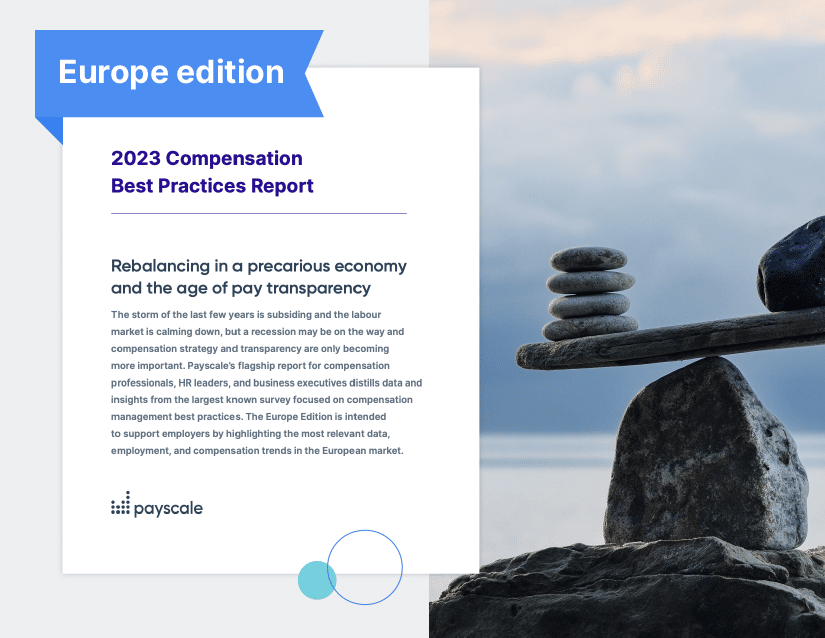Introduction
2022 was a difficult year for many reasons. The invasion of Ukraine, skyrocketing inflation, financial instability, union strikes, and increased European governance all created challenges for HR leaders and compensation professionals. The recent turmoil has contributed to labour shortages in European countries and around the world. Unemployment in the Euro area was 6.6 percent in December 2023, which is inordinately low and means that attracting talent is going to continue to require competitive compensation. Going into 2023, many organisations are understandably uncertain about where things stand, especially regarding the global economy, which has shown signs of an impending recession.
When it comes to compensation management for 2023 and beyond, organisations must balance demands for higher pay against the possibility that revenues could dry up and layoffs could become necessary later in the year. The potential for layoffs is more likely in organisations that overextended themselves to hire fast – and at any cost – during the Great Resignation. In addition, pay transparency legislation has expanded in Europe, and the European Parliament approved the Pay Transparency Directive on March 30, 2023. Combined, these factors are driving more organisations to increase investment in compensation – especially compensation strategy and pay equity to help prepare for pay transparency.
Compensation strategy
To face the challenges in 2023, more organisations are investing in compensation strategy. According to Payscale’s survey, total turnover for organisations headquartered in Europe was 34 percent in 2022 and voluntary turnover was a whopping 43 percent. This is considerably higher than for respondents in the CBPR overall. When we asked organisations what was most to blame for labour challenges, compensation was the most-cited cause in Europe.
In the wake of the Great Resignation, inflation, trends like quiet quitting, and the rise of pay transparency mean that more is being expected from employers when it comes to compensation. Organisations are responding by investing more in compensation strategy. According to our survey, most respondents in Europe (79 percent) said they either have a formal compensation strategy/philosophy or are working on one. Correspondingly, 78 percent have a person or team dedicated to the function of comp, which our analysis finds to be a key differentiator in compensation management maturity and readiness./
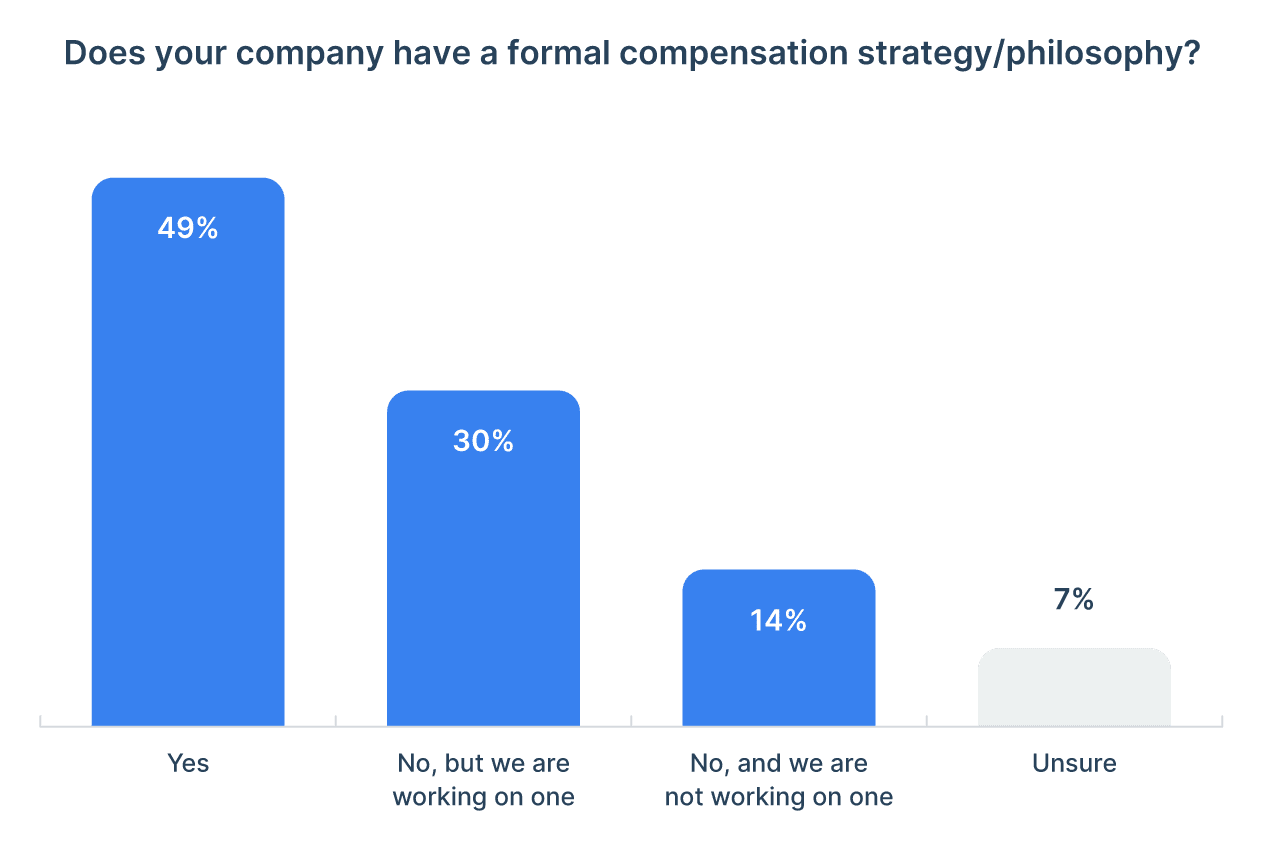
Pay increases
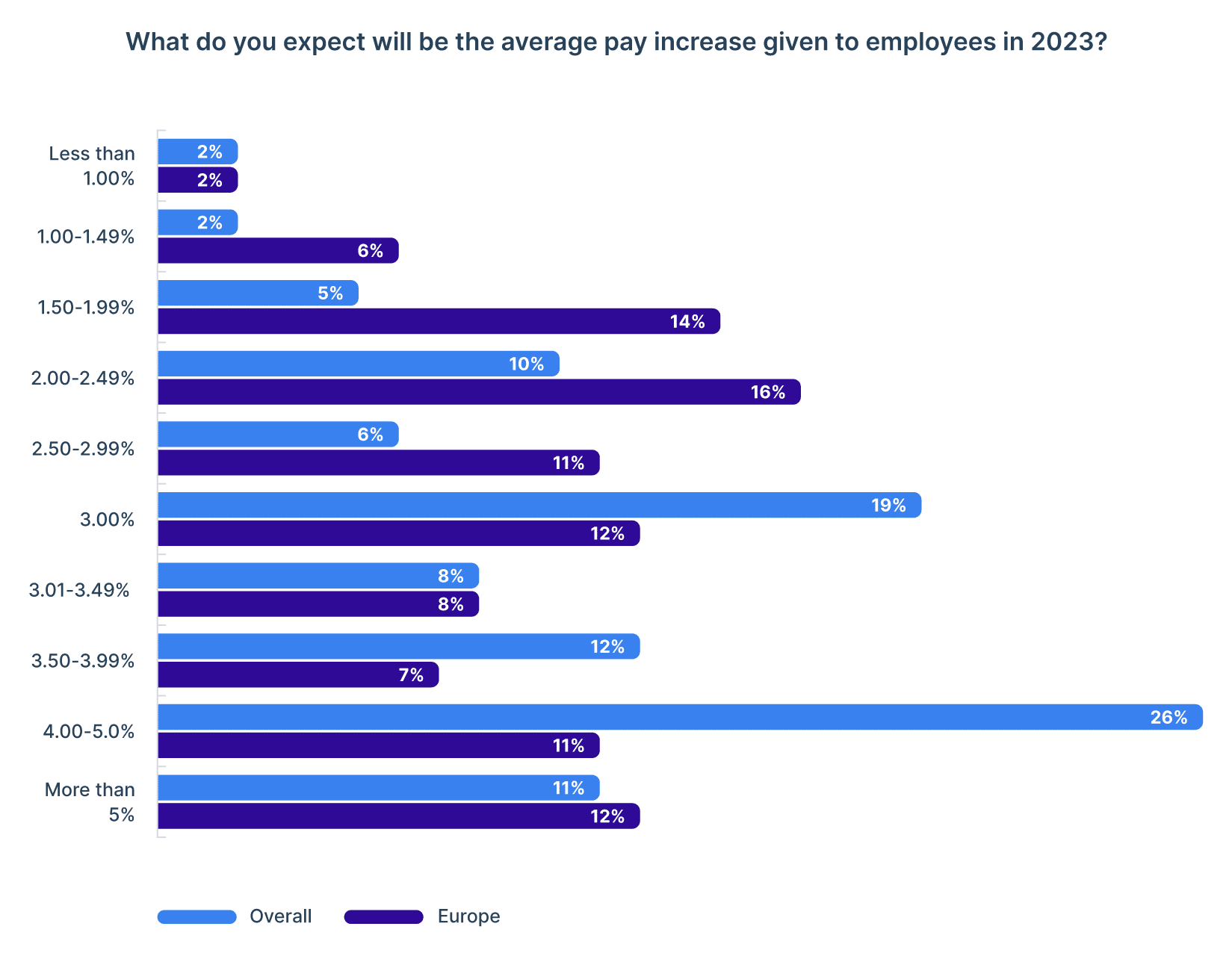
Considering the volatility of 2022, many employers are anxious about pay increases. On the one hand, employees are demanding higher wages due to inflation. On the other hand, the economic outlook for 2023 is uncertain, which leads to organisations being more conservative when it comes to pay.
According to our survey, 73 percent of organisations in Europe plan to give base pay increases in 2023 compared to 80 percent in the overall Compensation Best Practices Report. In addition, only 38 percent of organisations in Europe plan to give pay increases of over 3 percent, which is considerably less than those in the overall report who say the same.
Despite increased competition for labour, 31 percent of organisations in Europe expected their salary budgets to be lower than originally planned, which is nearly double compared to respondents overall (16 percent). As for the reason behind lower salary budgets, economic conditions are cited at the top concern in Europe.
Pay transparency
Pay transparency is now imperative in Europe. On March 30, 2023, the European Parliament approved the Pay Transparency Directive by a vote of 427-79 (with 76 abstentions). This legislation is even more stringent than pay transparency legislation that has passed in some US states. It requires employers to provide pay ranges to job candidates as well as specific pay information to employees at their request, including average pay levels broken down by gender. In addition, employers will have to publish their gender pay gaps, with some nuance on the requirements for organisations of different sizes as well as penalties for both pay gaps and non-compliance. This legislation will become law in April of 2023, and member states will then need to transpose the elements of the directive into national law within three years.
This landmark legislation has the potential to close the gender pay gap. It will be celebrated by employees, especially younger generations who have been clamouring for pay transparency. However, compliance with this legislation is not like flipping a switch. Although most organisations want to be more transparent about how they pay, they have some work ahead of them before they will feel confident in revealing their pay ranges.
While the majority of organisations in Europe (56 percent) say that recent pay transparency legislation has driven them to change or improve their compensation practices, the reasons why they have yet to become more transparent vary. When we asked, the most common response was that they lack confidence in the accuracy of their salary data (34 percent). Organisations lacking confidence in how they pay need to invest more in compensation strategy and pay equity. Payscale offers solutions to these challenges.
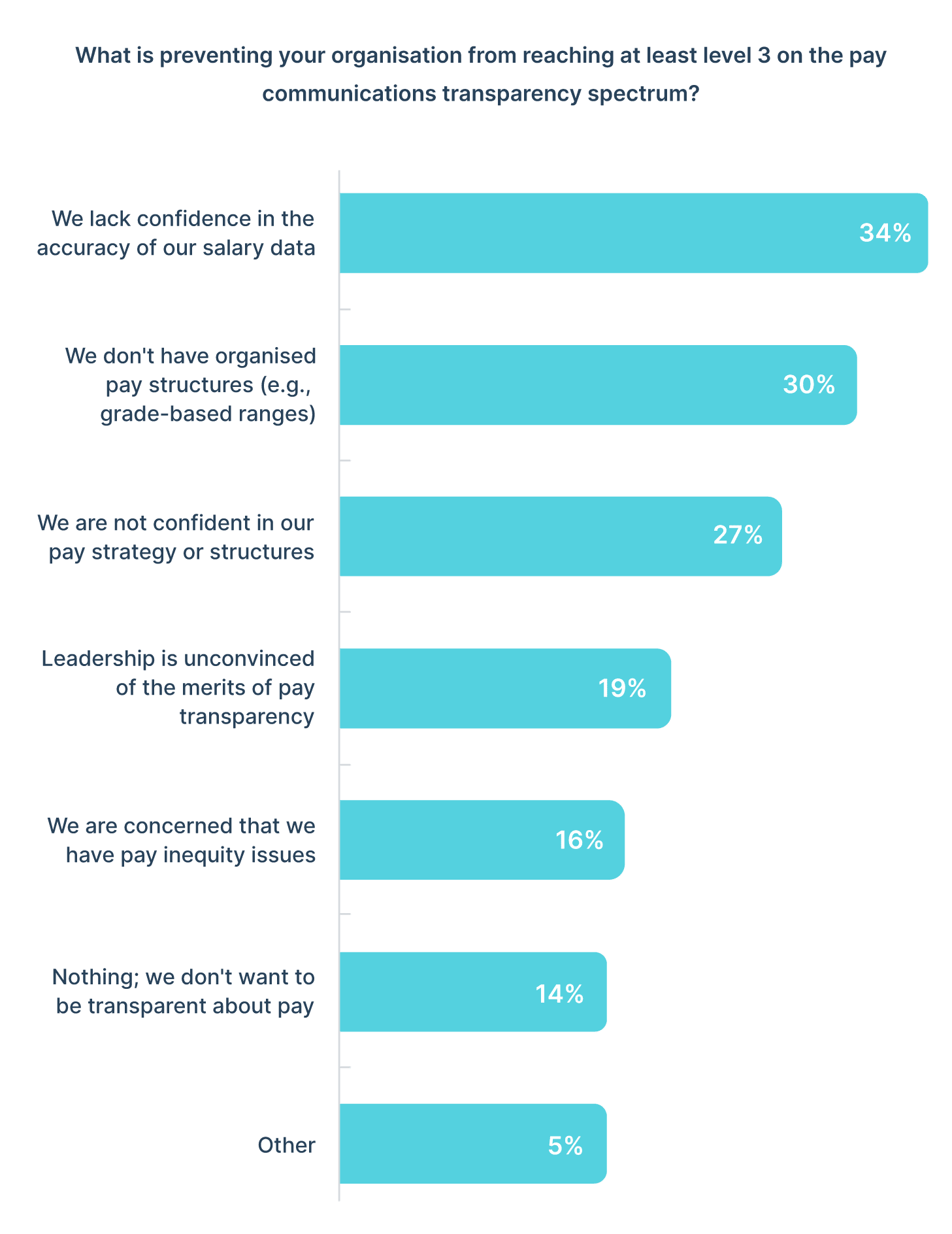
Pay equity
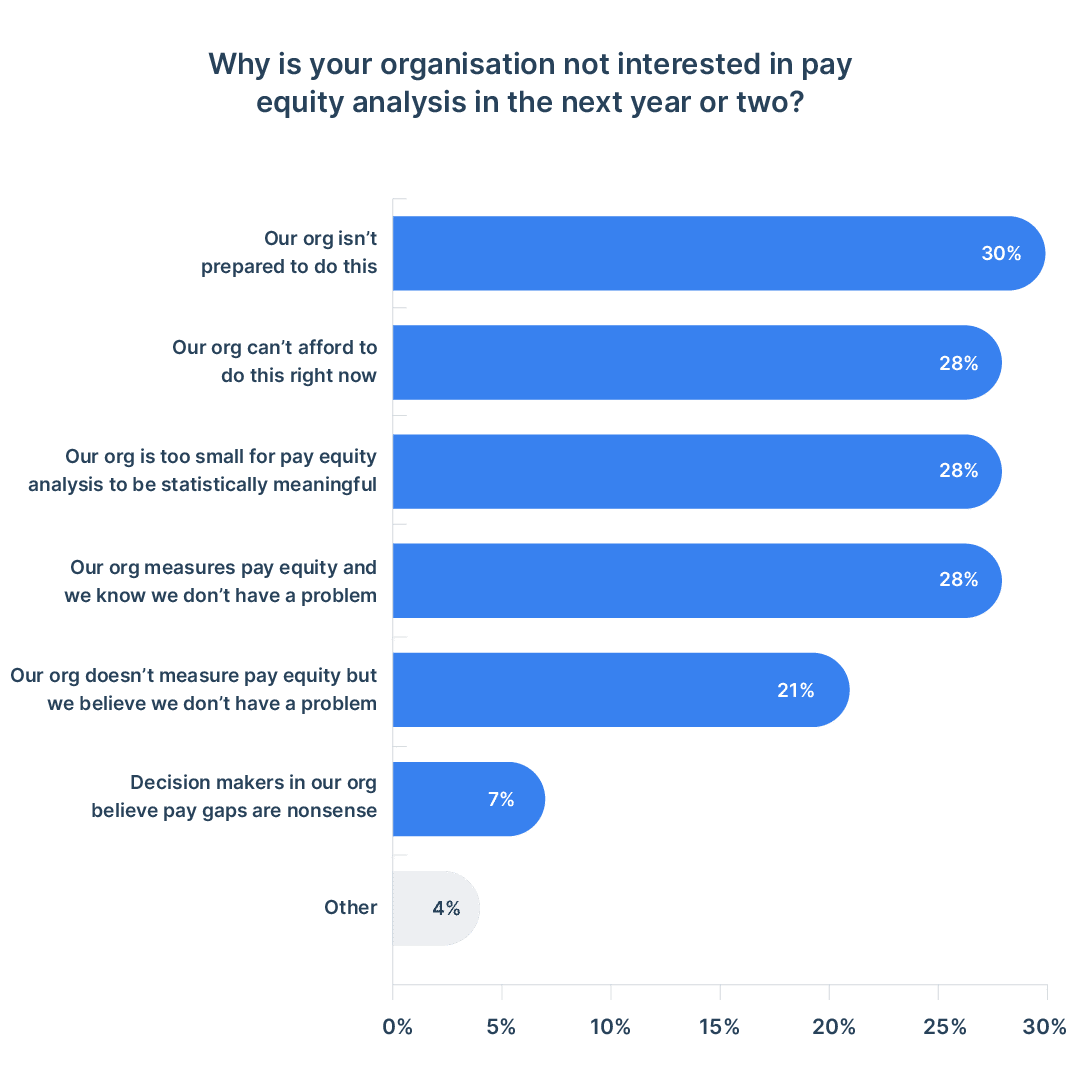
Before sharing pay ranges with employees and job candidates to comply with requirements for pay transparency, it is important to first be certain that employees are being paid fairly to market and that there are no significant pay gaps in the organisation between employees with the same jobs or doing similar work, especially when analyzing pay between protected classes, such as men to women.
This requires an investment in pay equity, which is a journey that begins with salary data and a compensation strategy and involves pay equity analysis, interpretation of pay inequities, and ongoing remediation to close pay gaps that can’t be justified by compensable factors such as education, tenure, or performance.
According to our survey, pay equity analysis is a planned or current initiative for 60 percent of organisations in Europe compared to 63 percent overall. For organisations not interested in taking action, we asked why. The largest reason was unpreparedness, such as a lack of pay structures (30 percent).
Most concerning are organisations that believe they don’t have a problem despite not measuring pay equity (21 percent), or those that say decision makers in their organisation believe that pay gaps are nonsense (7 percent).
Compensation software
Organisations are looking for help on the journey toward fair and transparent pay. Pay equity and pay transparency are complex solutions that require strategic planning, dedicated resources, and a more mature approach to compensation than is required for mere market pricing. Not only do employers need to continue to make competitive salary offers to attract talent, but they must also be conscientious about making offers that do not lead to pay inequities for current employees. This requires quick access to salary data and ongoing pay analysis. Compensation management software can assist employers tremendously with these tasks.
Unsurprisingly, compensation software appears to be a top priority for organisations in Europe this year, with 60 percent planning to either purchase it for the first time or evaluate their current system against alternative providers. Implementing this kind of technology supports the creation and execution of processes that help organisations move up the compensation maturity curve. With nearly half (47 percent) of organisations in Europe stating that their compensation management maturity is “as needed” or “emerging,” it’s understandable that many are looking for software to help them advance.
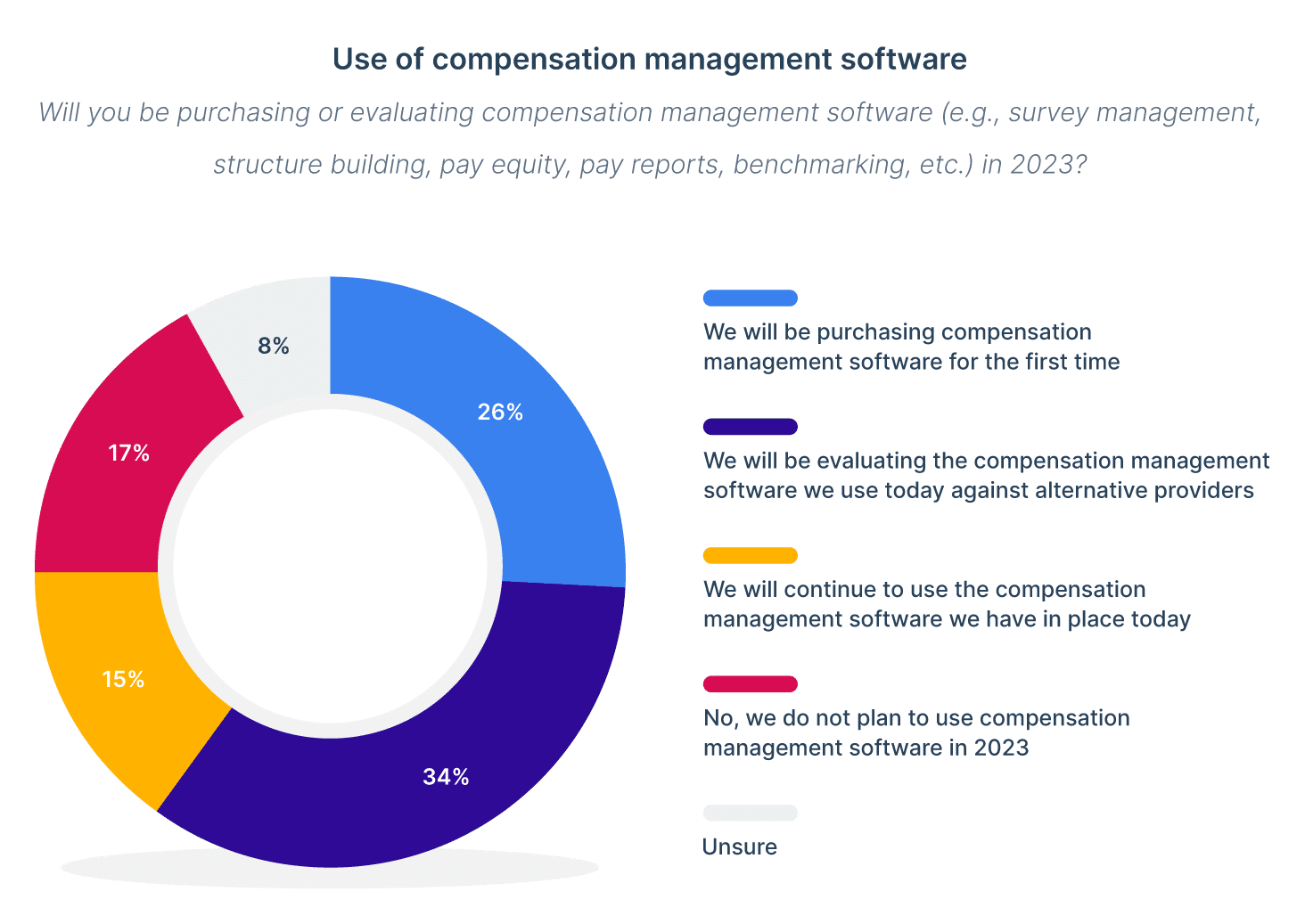
Methodology
The 2023 Compensation Best Practices survey gathered 4,933 responses overall between October 2022 and December 2022. The overall completion rate (55 percent) was the highest of any CBPR in recent history and contains more international responses, enterprise responses, and responses from executives than previous years. The Europe Edition shares insights and data based on survey responses from organisations who say that their headquarters are located in Europe, which includes 807 total responses.
Location
The majority of organisations surveyed who report being based in Europe (51 percent) are concentrated primarily in one location (state, province, or country). However, 22 percent of European organisations surveyed have a global workforce with employees distributed throughout the world compared to 17 percent of organisations overall.
Organisation Size
We separate out six organisational sizes for comparison. About 3 percent of respondents reflect organisations with fewer than 100 employees; 26 percent of respondents reflect mid-sized organisations with between 100 and 749 employees; 18 percent of respondents reflect organisations with between 750 and 4,999 employees; 6 percent reflect organisations with between 5,000 and 9,999 employees, 6 percent reflect organisations with 10,000 to 49,999 employees; and 11 percent reflect organisations with more than 50,000 employees.
Industry
Our report provides response data for organisations in 15 industries. The top industries represented in the survey were Finance & Insurance, Technology (including software), Other, Manufacturing, and Healthcare & Social Assistance.
Download CBPR Europe Edition
The Europe Edition of Payscale’s Compensation Best Practice Report (CBPR) is intended to support employers by highlighting the most relevant data and compensation trends in the European market from the overall report.
The Europe Edition includes insights on compensation strategy and preparedness, compensation planning around pay increases and pay increase frequency, how organisations are responding to inflation, what market data sources are most popular and most trusted, how organisations are using salary data to compensate for competitive skills, geographic pay strategies and the impact of remote work, and the action organisations are taking on pay transparency and pay equity.
Interested in the overall report for Compensation Best Practices? Download CBPR 2023.
